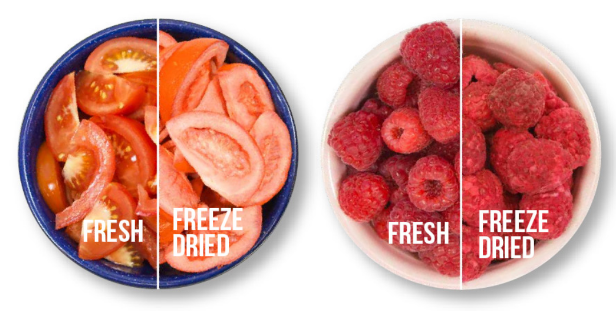Imagine you are planning a wilderness adventure and you want to make sure you have enough food to last you throughout the adventure. You might think of freeze-drying as a preservation method, but have you ever wondered if there are certain foods that simply can't undergo this process? In this article, we’ll explore the fascinating world of freeze-drying and determine which types of foods don’t perform well during the freeze-drying process.
![E][QGBKO}BE5RLZ}YU6L{V3.png E][QGBKO}BE5RLZ}YU6L{V3.png](https://images.techoeidm.com/upload/default/20230915/fdda04be408970bd5cf28386bfd74547.png)
Freeze dryers
Freeze dryers, also known as lyophilizers, work on a very remarkable principle: it removes moisture from a substance while maintaining its structure and integrity. The process, known as freeze-drying, involves freezing the material, reducing the surrounding pressure, and then heating to sublimate the frozen water directly into steam. The result is a product that retains its original taste, texture and nutritional value, making it an important method for preserving a wide range of substances from food and pharmaceuticals to biological samples.
Freeze drying works by freezing food quickly and then removing the ice crystals, leaving a dehydrated but still edible product. However, some foods contain moisture or other ingredients that make it difficult or impossible to successfully freeze-dry.
How It Works
The freeze-drying process consists of three main steps:
Freezing: Food is frozen to extremely low temperatures, turning moisture into ice.
Vacuum: Frozen foods are placed in a vacuum chamber where a reduction in air pressure causes ice to transform directly into steam, bypassing the liquid stage (a process called sublimation).
Drying: Heat to further remove any remaining moisture, leaving a lyophilized product.

Foods that cannot be freeze-dried
High water content fruits
Fruits like watermelons, cucumbers, and oranges are mostly water. Freeze-drying them leaves a brittle, tasteless residue that bears little resemblance to the original fruit. These fruits with their high water content simply cannot survive the entire process intact.
dairy products
Milk, yogurt and soft cheese are not suitable for freeze drying. The complex structure of dairy products, especially their fat content, makes them unsuitable for this method of preservation. Freeze-dried dairy products can break into unappetizing pieces.
green leafy vegetables
Lettuce, spinach and other leafy green vegetables have a high water content and a delicate cell structure. Freeze-drying causes them to lose their crispiness and become mushy, making them unpalatable.
Egg
Eggs are a complex mixture of protein and fat and do not freeze-dry well. Attempting to freeze-dry eggs results in a product with a strange texture and an off-putting taste.
avocado
Avocado's creamy texture and high fat content are its drawbacks during the freeze-drying process. The end result will be far from the smooth, luscious avocado you love.
in conclusion
Freeze-drying is a great way to preserve food, but not all foods can be successfully freeze-dried. The key to successful freeze drying is knowing which foods work best and which processes to use to get the best results. When choosing freeze-dried foods, it's important to choose foods with low moisture content that won't suffer from freezing and dehydration. The items listed above are examples of some foods that are difficult or impossible to freeze-dry effectively, but there are others that may not be mentioned here. Experimenting with different foods and techniques can help you determine what works best for your specific needs.


![E][QGBKO}BE5RLZ}YU6L{V3.png E][QGBKO}BE5RLZ}YU6L{V3.png](https://images.techoeidm.com/upload/default/20230915/fdda04be408970bd5cf28386bfd74547.png)

Comments
All Comments (0)